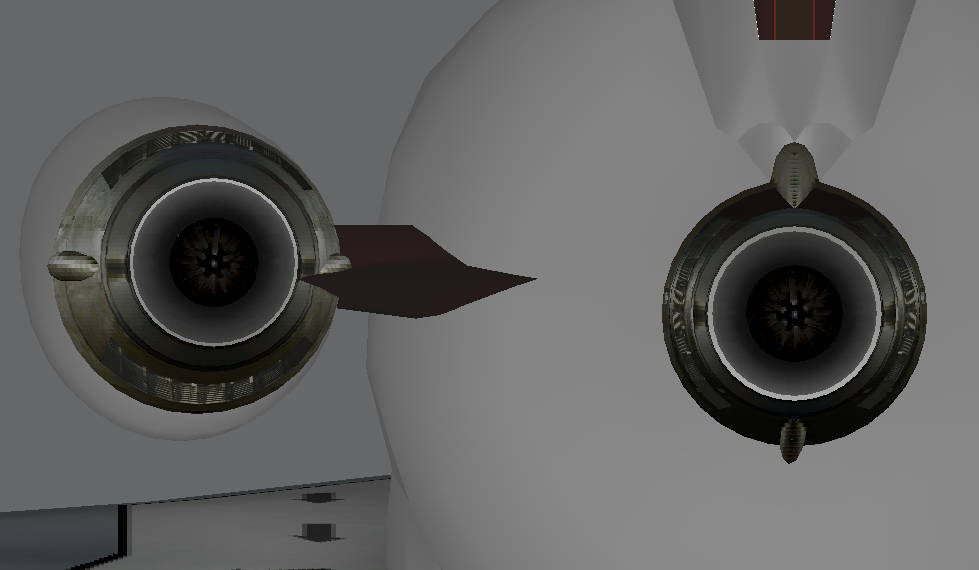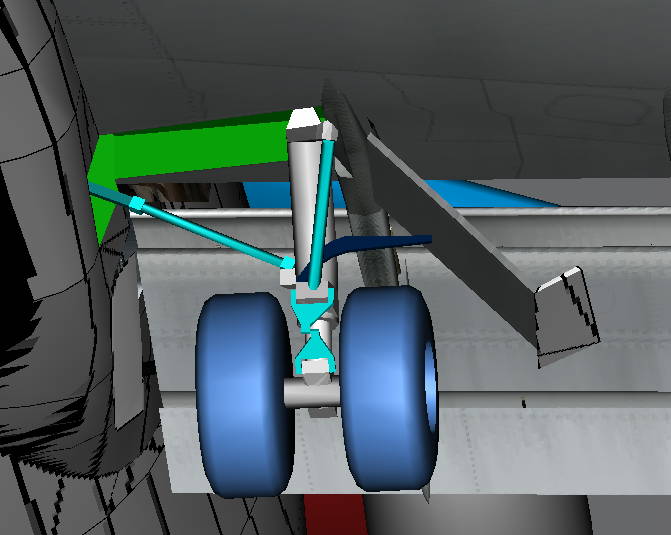Why
Vistaliner!? Why? (page two)
- Erick Cantu (12.22.04)
Continued from page one...
This left deciding who to release it with. I
didn't want SGA to have to support the model and Kittyhawk has its own problems, so we
created a fake group name which pays homage to my favourite train (the California Zephyr,
famous for its Vista-domed cars. Each car in the Zephyr pool was named, with the name
following the word 'Silver'), and that was that.
The first item of importance on the newly christened
SilverJet 727 was the wing. The 727s wing is an immensely difficult wing to get right (and
at the time only CS really did a good job of it), mostly for two reasons, the flaps, and
the elegant curve of the inboard leading edge. On the original FFX 727, the inboard wing
was a straight line, lacking this complex curve, which meant that the Krueger flaps were
ultimately shaped wrong. We made sure to not make the same mistake on this model, as so
many others did. This was thus one of the model's focal points, and a great deal of time
was spent on it. The flaps on the 727 present their own set of challenges, not only
because they are triple slotted, but also because the easiest way to get the animation
right was to model every last operating mechanism. This meant that the rails, shuttles,
screwjacks, and anything else had to be there, not only for animation but because it makes
little sense to have flaps floating on nothing! Another common mistake on 727 models was
the shaping of the bullet fairings on the flaps. These bullet fairings are where the flap
screws attach to the side of the flap, just behind the notches cut into the sides of the
primary (middle) section. It was decided that a couple of tubes attached to the flaps
wasn't going to do it, so they were built right into the flaps from separate parts,
individually shaped and blended (people who know me know the technique I used to do this,
it's the same way I do wingroots), joined, refined, re-smoothed, and tweaked to final
shape.
The result is what I'm not ashamed to say are what I
believe are the most accurate, if not the most detailed, 727 flaps in existence. I don't
like to brag (trust me, I have problems accepting accolades, I'd rather just do away with
them), and so you know I mean it from the bottom of my cold black heart. The leading edge
devices were another story in themselves, requiring loads of cuts, linkages, animations,
rails, proper sequencing, and so on. They're the first 727 LEDs to have every last rail
and piston animated, to the best of our knowledge, and in my opinion it was a miracle that
I didn't mess them up! Ailerons were then cut, as were spoilers, and light lenses. Fuel
dump pipes were added as well as logo light pods, static vanes, and lots of details I bet
you people don't even know are there! In addition to this, we wanted the wing to flex,
meaning it had to be cut just right to maintain a balance of functionality and smooth
flex. It was ultimately flexed in 3 places at the trailing edge and 4 at the leading edge,
providing a very nice, smooth, subtle flex. let's hope I never have to make another 727
wing again!
Engines were fairly straightforward (after making 4 or 5
sets of JT8Ds, it gets to be pretty routine to animate and texture a new one), as was the
texturing of the fuselage - we decided to use the tried and true one-piece fuselage and
tail, because it is popular with painters, and it's easier to work with. The next big
challenge was the landing gears. The nose gear was not too bad (you would be amazed how
similar the 727 and 737 nosegears are, but with the 60% airframe compatibility between the
737 and 727, it should not surprise anyone!), however, the mains were a nightmare. We
decided to model them just like the wings - everything must move, including the break in
the upper gear strut (to our knowledge, again, something never done before). Thankfully,
this went a bit faster than the wings did, and within a couple of days we had a fully
functioning set of 727 main gears, from the sway brace to the strut break, everything was
present, and I was glad to be done with it! Gearbays followed, and once again Chris proved
to be indispensable as we had photos of every last area of the gearbays, and enough
materials to accurately model the APU as well! Thanks, Chris!
Finishing work was aerials, airstairs, lights, and the
cargo bay. It didn't take long, and we had a brand new 727 model to play with. Frit got to
work on his 'simple' FDE (which, incidentally, DOES fly by all published numbers and in
the opinion of the 727 pilots who flew it, was more than acceptable and certainly better
than 'simple!'), and the painters got to work.
...previous
continued...
Review home page
2
|


Vistaliner exhaust

Vistaliner gear-bay |

